SMD Soldering Preparation
I've discussed some soldering techniques in previous articles and for this project I will be using manual "hand" assembly and rework for Surface Mount components.
To ensure consistent, reliable, reapeatable quality surface mount soldering and rework I researched a number of different methods and technologies;
- Conduction
- Convection
- Radiation
- Combinations of the above.
and products that employ these methods.
For any new prototype being developed components need to be added in an incremental and progressive manner with frequent testing.
This process is to ensure that each stage is working as desired prior to tackling the next.
This approach discounts the use of an oven where all components are soldered simultaneously. (i.e. Perfect for mass production but not suitable for prototype development.)
This project uses non-leaded components so contact conduction soldering alone is not enough. (James Bond?)
The main parts of the design are QFNs (Quad Flat No Leads) with a central thermal pad and a CSP (Chip Scale Package) with solder balls.
Just soldering around the perimeter of these parts does not address the central thermal which needs to be connected to the PCB for heatsinking, mounting and sometimes "grounding" purposes.
("Ground is a good place to grow carrots and potatoes")
CSPs have solder balls as contacts (just like a bga but only smaller) and all should be melted simultaneously to ensure it sinks down into position evenly and correctly.
Another consideration are plans to reworking the the prototype in case parts need to be replaced, removed or remounted.
With all these considerations in mind this limits the choice to controlled hot air convection, IR radiation or combination of both and some contact soldering.
I don't possess a suitable IR rework station so this limits my choice to controlled hot air convection.
In summary the my plans are;
| Component Type | Soldering | Desoldering |
|---|---|---|
| Through hole | Soldering Iron | Soldering Iron or Hot Air |
| 2 ended Chip components | Soldering Iron, Soldering Iron Tweezers or Hot Air | Soldering Iron, Soldering Iron Tweezers or Hot Air |
| Multi leaded components | Soldering Iron or Hot Air | Soldering Iron, Soldering Iron Tweezers or Hot Air |
| Non leaded Components | Hot Air | Hot Air |
"A good craftsman never blames his tools"
My response to that is "This is because craftsmen use high quality and perfectly honed tools.".
To remove the risk of TORCHING my new project I will be using equipment that will prevent that from happening.
For contact soldering I will use a high quality soldering Iron and tweezers that has its temperature set to as low as possible.
For convection soldering (Hot Air) I will use a Hot air rework station that has computer controlled temperature profiles.
"Always - Use flux paste! - I can't stress this more!"
Flux paste improves heat transfer.
Here a some photos of my Hot Air rework station and I removing a PLCC.
This is just a practice run on a very old board. No ESD protection measures were taken.
Apply flux paste to leads of the component to be removed (this also works for bgas - use specially formulated flux liquid instead)
Install heat shield with helping vacuum hand.
The heat shield encapsulates the hot air within its boundaries preventing collateral damage.
Click on tool button to run a preprogrammed temperature profile
(This particular temperature profile brings the entire component to an even heat at two different temperatures below the solder's melting point and then peaks quickly to raise the temperature to reflow for just a few seconds before cooling and shutting down.)
The programmed profile runs through its paces.
I like the way my machine has an animated display to tell me where it is in the process.
Just at the end of the temperature profile peak the component magically pops off the PCB by itself.
No damage to the PCB or component at all (except some possible ESD damage because I didn't take the appropriate precautions for this practice run).
I just need to clean off the residual flux and remove and unwanted solder.
Just nearing the end of the program and about to shut down.
Just so easy!

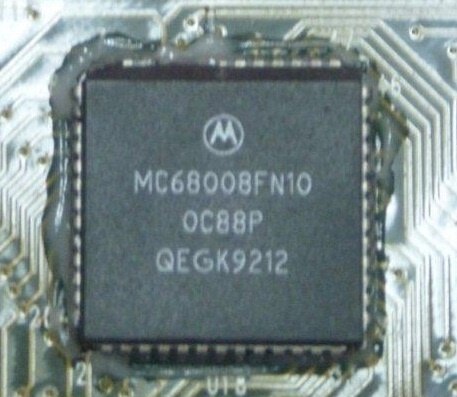
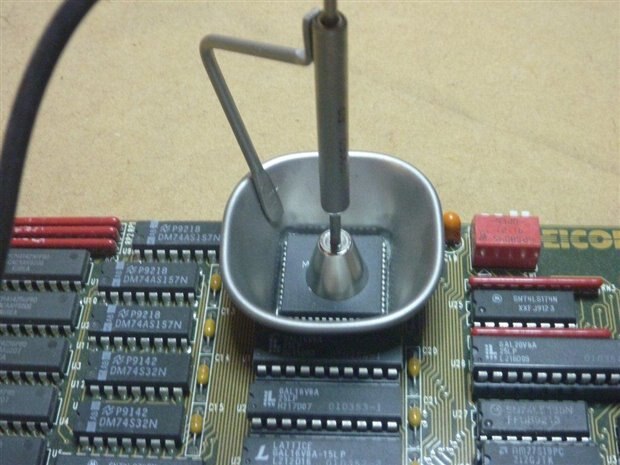
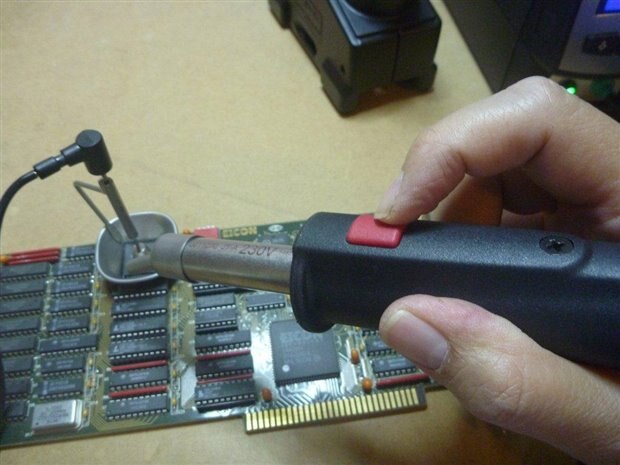
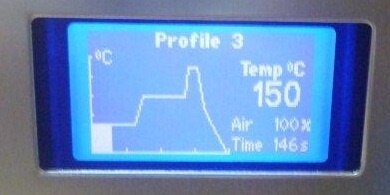
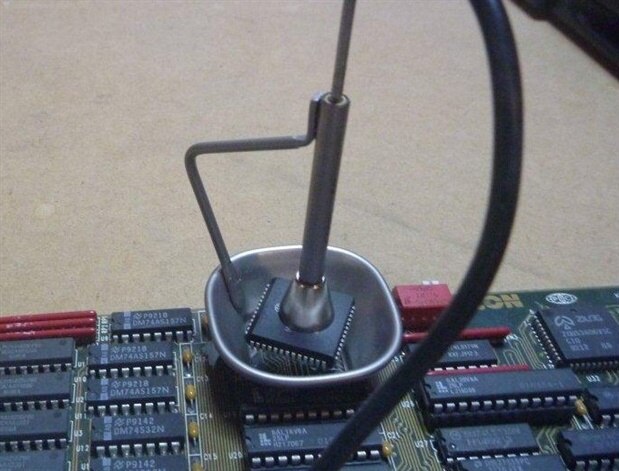
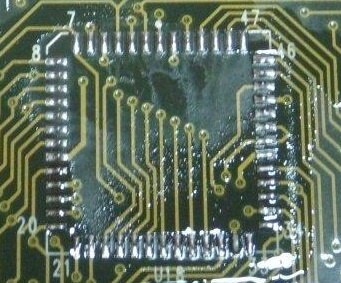
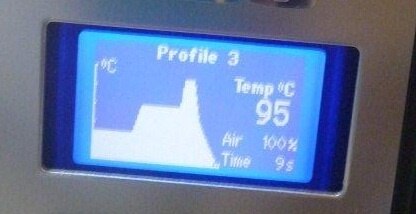
-

vsluiter
-
Cancel
-
Vote Up
0
Vote Down
-
-
Sign in to reply
-
More
-
Cancel
-

COMPACT
in reply to vsluiter
-
Cancel
-
Vote Up
0
Vote Down
-
-
Sign in to reply
-
More
-
Cancel
-

vsluiter
in reply to COMPACT
-
Cancel
-
Vote Up
0
Vote Down
-
-
Sign in to reply
-
More
-
Cancel
Comment-

vsluiter
in reply to COMPACT
-
Cancel
-
Vote Up
0
Vote Down
-
-
Sign in to reply
-
More
-
Cancel
Children